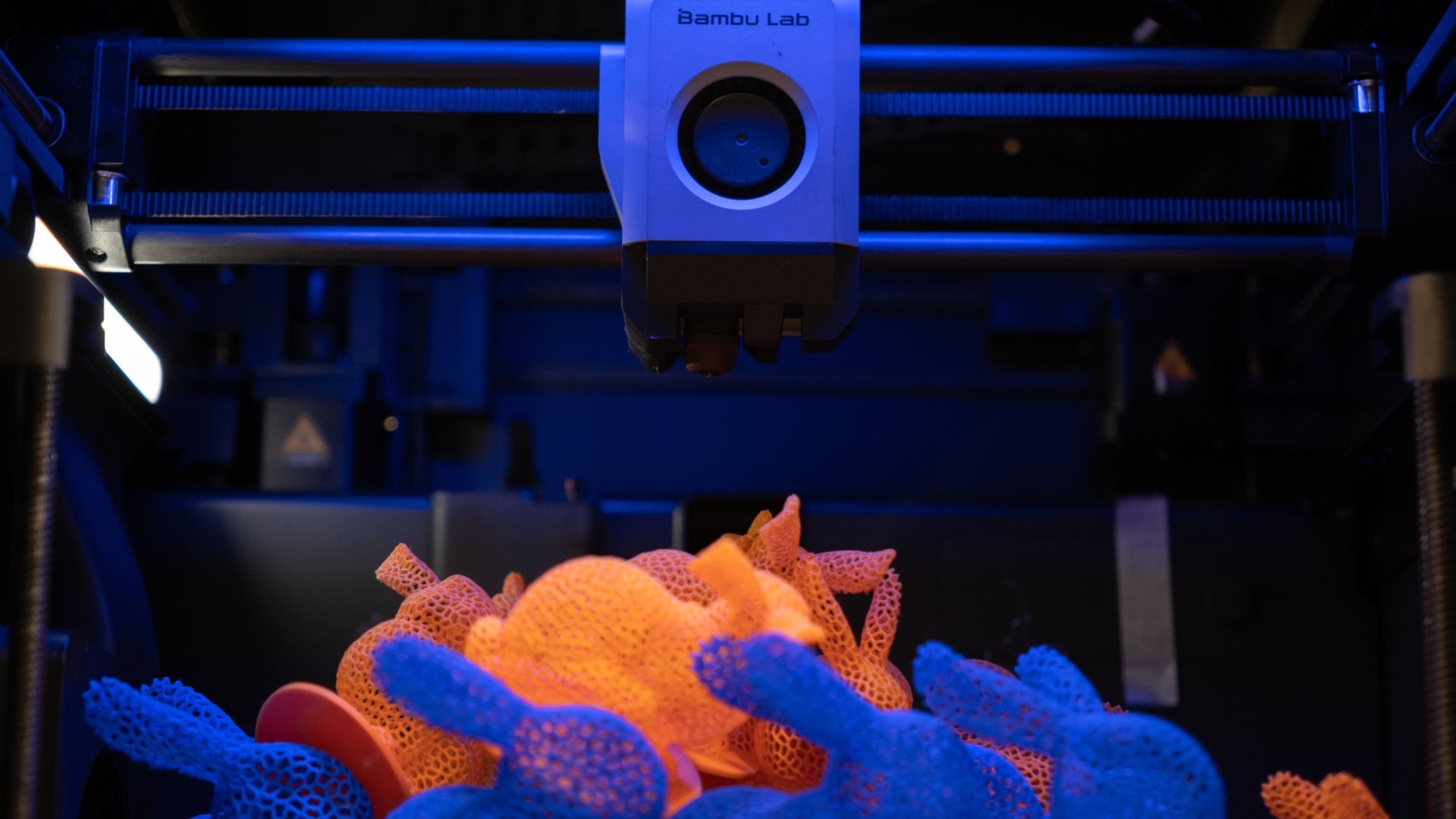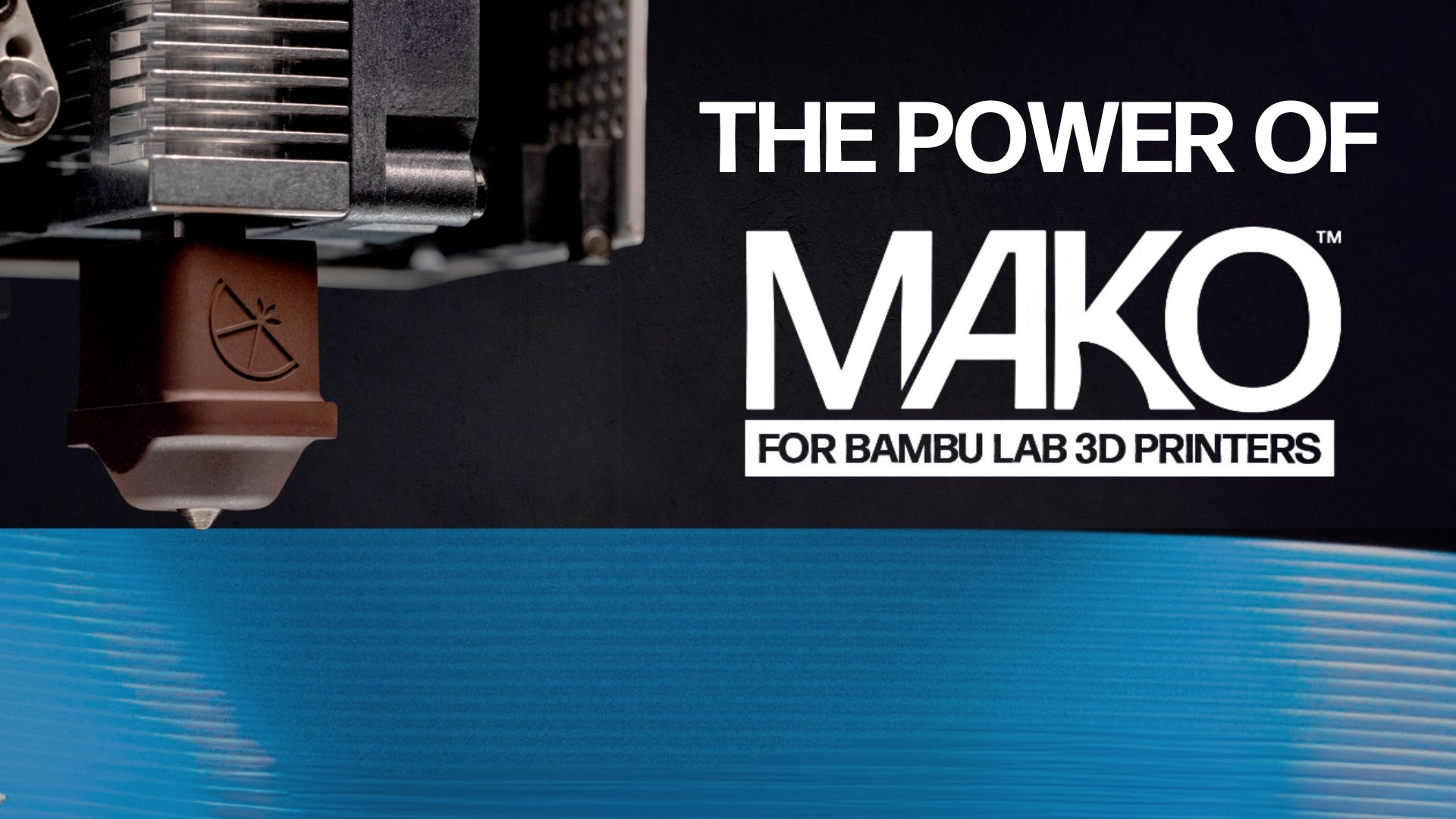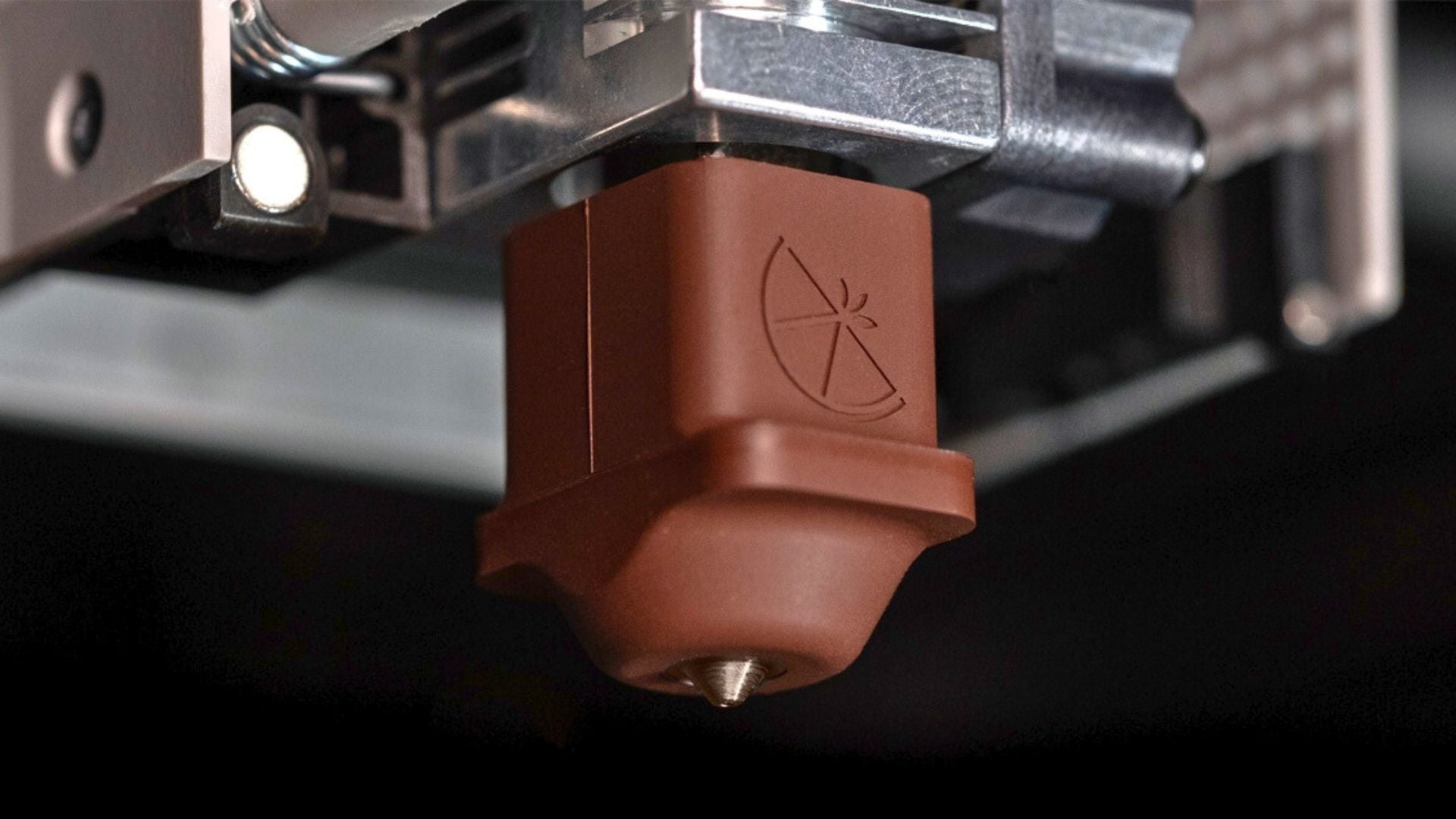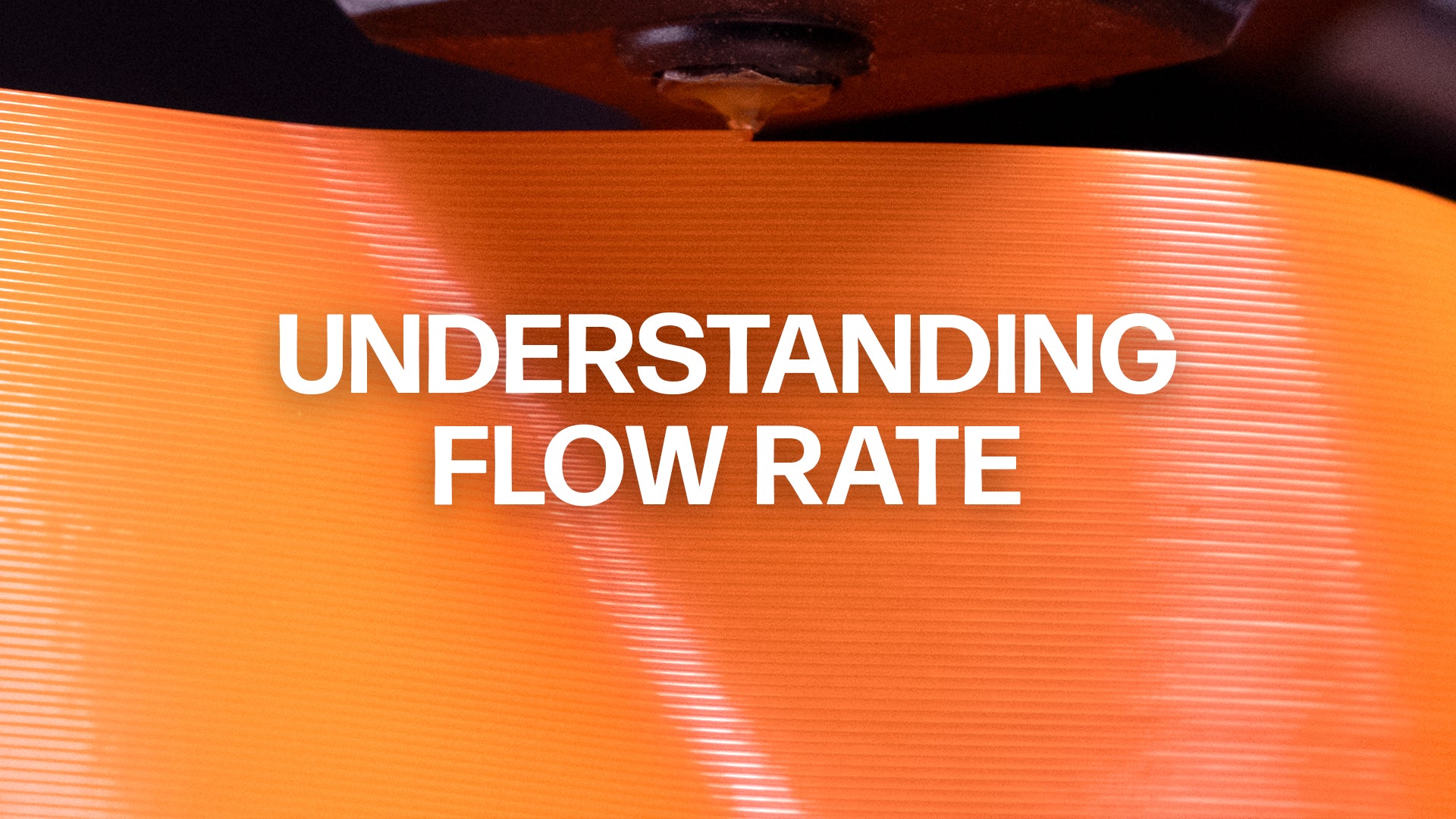
Which Nozzle is Right for You?

Ben Ryder
Engineering Intern
With many options available, knowing what nozzle is best can be intimidating. Selecting the correct nozzle when 3D printing is critical for getting the best results. This guide breaks down the most important factors to consider when selecting a nozzle so you can find what best suits your 3D printing needs.
There are three main variables when it comes to nozzles: material, nozzle geometry, and orifice diameter. Material properties can dictate things such as abrasion resistance and thermal conductivity. Nozzle geometry determines what hot blocks can be threaded into and what tools will be needed to install the nozzle. Orifice diameter controls the amount of plastic that can leave the nozzle, impacting different properties of the resulting 3D print. The following sections will compare the different nozzles offered by Slice Engineering® to help find out which nozzle is right for you.
Material
Slice Engineering currently offers nozzles in two different materials which differentiate the BridgeMaster® and Vanadium™ nozzles. BridgeMaster nozzles are made from a hardened copper alloy that has exceptional thermal conductivity. The substrate's high thermal conductivity allows the filament to stay at the desired printing temperature all the way to the tip, allowing the nozzle to stay at a uniform temperature even with convection cooling such as from a radial blower. The ability to maintain uniform temperature under tremendous airflow makes BridgeMaster the nozzle of choice for bridging and overhang applications. The nozzle is plated with a carbide based coating which increases the surface hardness. However, the material is still soft relative to steel. If abrasives are used with softer alloy nozzles, the particles in the melt flow can erode the orifice and change its geometry, decreasing the resolution (cleanness) of the final printed part. This erosion occurs when the hardness value of the filler is higher than the nozzle material. The carbide coating on the BridgeMaster increases the surface hardness sufficiently to prevent erosion with many fillers such as organic materials, glow, and glitter. However, if this coating is eroded away then less abrasive fillers can erode the substrate material. For highly abrasive filaments Vanadium nozzles will be the best pick.
Vanadium nozzles are made from vanadium-alloyed, high-speed steel which has a minimum Rockwell C hardness of 65. This allows for filaments with ceramic, carbon fiber, glass fiber, metal, or other fillers to be printed with no worries of changing the orifice size. Vanadium nozzles are less thermally conductive than BridgeMaster nozzles due to the reduced mean free path of the electrons in the tool steel - which basically means the distance a heat carrier can move inside of the metal before it runs into another particle - is greater inside of the BridgeMaster nozzles. This increased travel distance allows the thermal energy to travel through the material quickly.
Due to the differences in properties, more care must be taken to ensure the Vanadium nozzle tip does not drop below the melt temperature of the filament being used or it may clog. This nozzle cooling effect can be mitigated by using well-designed part cooling ducts that only blow air onto the printed part and not the nozzle tip. If clogging issues persist, one solution is to raise the hotend printing temperature 5-10 ℃ which can prevent the nozzle tip from dropping below the melt temperature of the filament. This small temperature change will not have much impact on the properties of the filament but will typically fix the issue of clogging nozzles. Another solution to clogging nozzles is the use of a convection shield which can prevent the cooling effect by blocking the air. Convection shields can take the form of a machined part such as the Mosquito® Magum+™ Convection Shield or silicone like the Copperhead® Silicone Boot. The geometry of both solutions blocks air from passing around the nozzle preventing the cooling effect.
Both the BridgeMaster and Vanadium nozzle series are coated with wear-resistant and plastic repelling coatings to improve performance while printing. However, with time it may be advantageous to reapply a nonstick coating, such as Plastic Repellant Paint™, as the nozzles become more worn and the factory coating degrades.

Nozzle Geometry
At Slice Engineering we offer our Vanadium and BridgeMaster nozzles in two different geometries: Rep Rap style and AP3X™. Rep Rap style and AP3X nozzles both have 7 mm of M6x1.0 threads and a 6 mm hex. The difference between them is the overall nozzle length. The Rep Rap style has a total length of 12.5 mm where AP3X nozzles have a total length of 14.5 mm. The extended tip length of the

Orifice Diameter
Nozzle orifice diameter dictates many different properties of 3D prints. 0.4 mm nozzles have become the industry standard included with most 3D printers. This size handles most printing applications relatively well but suffers from weaker layer adhesion and slower print speeds when compared to larger orifice diameters. Using a larger orifice allows for thicker layers which can drastically speed up the time it takes to print a part as thicker layers mean fewer paths have to be traveled for the same part height. These large orifices also allow for more molten plastic to contact the previous layer when extruded, which allows for very strong interlayer adhesion. Strong interlayer adhesions reduce the amount of anisotropy in the polymer parts, increasing the mechanical properties in the Z direction to be comparable to the X and Y direction. Parts printed with sufficiently large nozzle orifices can support hundreds of pounds, really changing what applications can be fulfilled with a 3D printed part.
Larger nozzles do have some drawbacks though, like having lower print quality due to coarse layers and slight variations in layer width when printing. When using filaments that contain fillers, it is important to have a minimum nozzle orifice of 0.4 mm as anything smaller can cause the tip to clog. Some fillers may still clog a 0.4 mm nozzle as anyone who has printed glow-in-the-dark filament can attest. Larger nozzles are a must when using these filaments. It’s good practice to always check the filament manufacturer's recommendations.
Orifice diameter also dictates the layer height and width when slicing a 3D file. The general rule of thumb is that the layer height should be between 25% and 75% of the nozzle orifice and the layer width should be between 100% and 120% of the orifice diameter most of the time. Typically, if you need to print outside of these parameters it is better to swap out nozzles to have an orifice that falls in these “Goldilocks zones”. Both BridgeMaster and Vanadium come in multiple orifice diameters ranging from 0.2 mm to 1.8 mm allowing for everything from fine details on miniatures to end-use parts for industrial applications to be printed with either nozzle series.

The Slice Way
Two of our six core values at Slice, Culture of Integrity and Systematic Excellence, are exemplified in every product we produce, including our nozzles. From the sourcing of high-quality stock materials to the precision, American manufacturing, nothing is spared to make the best product we can. Our goal is to make the right choice no matter the cost to ensure integrity and excellence in every product. Each step of the design process is evaluated to find value-adding innovation to bring the best performance to our customers. Each nozzle is inspected twice prior to packaging to catch any flaws or imperfections both visually and functionally. You can rest assured that Slice Engineering nozzles are made with the highest quality materials and manufacturing, providing you with the best nozzle money can buy.




